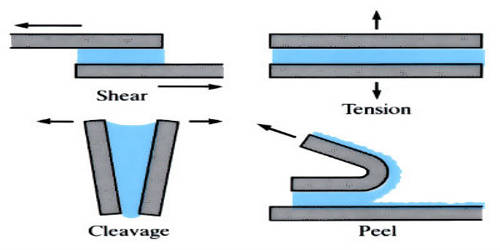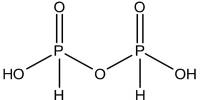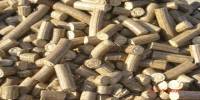Adhesive bonding describes a wafer bonding technique by applying an intermediate layer to connect substrates of different types of materials. It is the process of joining two surfaces together, usually with the creation of a smooth bond. Those connections produced can be soluble or insoluble. The commercially available adhesive can be organic or inorganic and is deposited on one or both substrate surfaces. This may involve the use of glue, epoxy, or one of a wide range of plastic agents which bond either through the evaporation of a solvent or through curing via heat, time, or pressure.
One of the main advantages of adhesive bonding is that it allows for the even distribution of stress loads, thereby reducing the stress on the joint. Another advantage of adhesive bonding is the versatility it affords, allowing for the joining of a wide range of items as well as being easy to automate. There are, however, a number of limitations to using adhesives. Firstly, they are prone to failure when exposed to high heat or weathering. Adhesives can also take time to fully fix and acquire full strength. Adhesives can also cause problems related to disassembly when compared to other, less permanent joining techniques.
The procedure enables bonding temperatures from 1000 °C down to room temperature. The most important process parameters for achieving a high bonding strength are:
- adhesive material
- coating thickness
- bonding temperature
- processing time
- chamber pressure
- tool pressure
Adhesive bonding is used across many industries including automotive, aerospace, medical and even textiles. It has the advantage of relatively low bonding temperature as well as the absence of electric voltage and current. Among the composite applications that are commonly bonded using adhesives are fiberglass, and fiber-epoxies like boron-epoxy and carbon-epoxy. Based on the fact that the wafers are not in direct contact, this procedure enables the use of different substrates, e.g. silicon, glass, metals and other semiconductor materials. A drawback is that small structures become wider during patterning which hampers the production of an accurate intermediate layer with tight dimension control. Due to the versatility of this process for a range of material types the only real limitations arise with use, such as for outdoor applications that need to withstand weathering. Further, the possibility of corrosion due to out-gassed products, thermal instability and penetration of moisture limits the reliability of the bonding process. Another disadvantage is the missing possibility of hermetically sealed encapsulation due to the higher permeability of gas and water molecules while using organic adhesives. However, adhesive bonds do not support high peel loads above 120°C.
















